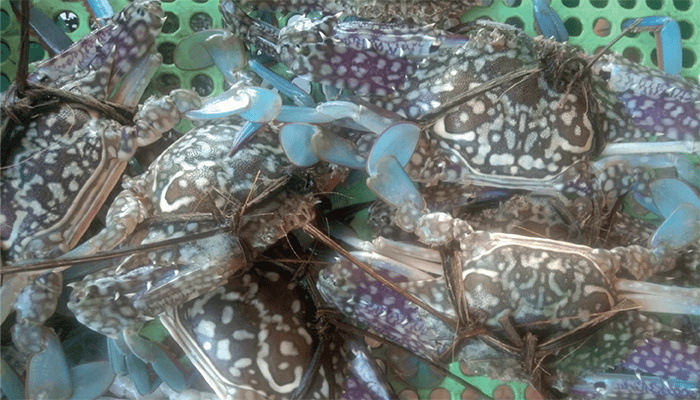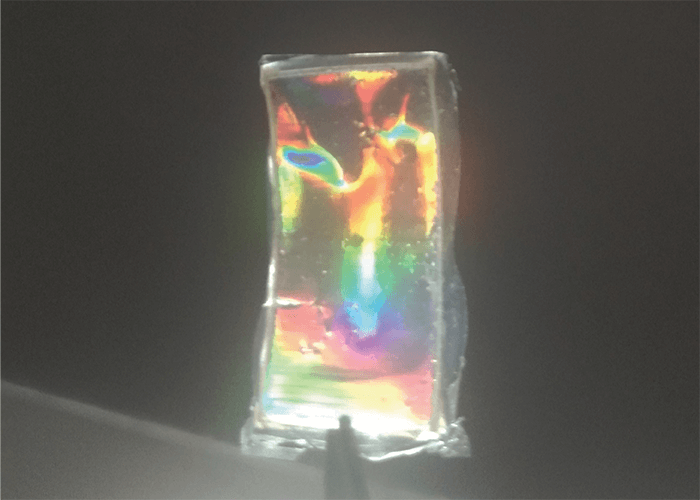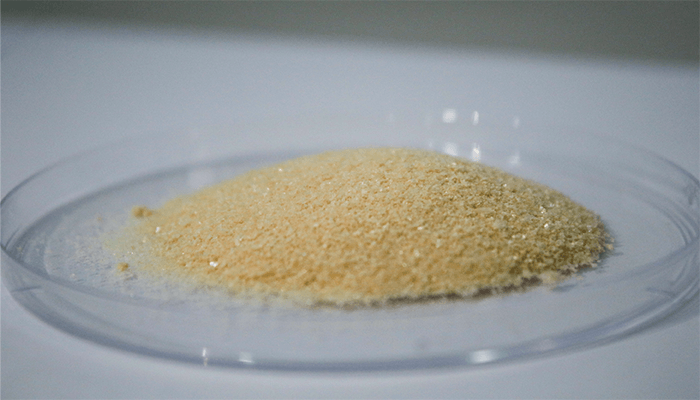Seafood is delicious (sorry, vegetarians), but it also creates large amounts of solid waste; namely, crustacean shells. With “one man’s trash is another man’s treasure” possibly ringing in their ears, a team of researchers in the Philippines set out to find an alternative use for crab shell waste, settling on an ambitious and somewhat unlikely application: diffraction gratings – an essential component within spectrometers.
By washing, drying, and crushing crab shells into a powder before using a chemical process, the team was able to extract chitosan – which could be converted into a bioplastic material. In solution form, the researchers found that chitosan is transparent and can be molded through a process known as soft lithography. The chitosan liquid was poured into a grating mold and microscopic grooves were imprinted onto the chitosan upon hardening (1). Performance of the bioplastic gratings was comparable to that of grating replicas made of silicone, but with the chitosan versions expected to have a reduced impact on the environment.


Lead author Raphael A. Guerrero of the Department of Physics at Ateneo de Manila University, Philippines says, “The successful replication of these gratings was verified through atomic force microscopy and experiments with a laser. We saw well-defined grooves on the chitosan surface and observed the correct diffraction patterns based on the grating structure that was replicated on chitosan. The resulting fidelity of the replication was far better than we expected.”
The study highlights the potential of replacing silicone in optical devices with an environmentally friendly counterpart. By controlling the degree of deacetylation and by further modification through chemical functionalization, the team can create various sustainable bioplastics for optical manufacturing and various analytical applications, according to Ian Ken Dimzon, Guerrero’s co-author from the Department of Chemistry at Ateneo de Manila University.
Efren Gumayan, another co-author in the study, says, “Once we’ve optimized the process and improved the chitosan material, we could create light-weight spectrometers that don’t cause harm to the environment and cost relatively less than what is currently available on the market.”
Guerrero offers just one example: “A chitosan-based light-weight single-use spectrometer could allow researchers to analyze water samples in the field with minimal impact on the environment.” As scientists across the world call out for more affordable, more sustainable, and more portable testing devices, will the crab have the last laugh? Probably not.
Image Credit: Efren Gumayan


References
- Gumayan, E.G., Dimzon, I.K.D., Guerrero, R.A., “Chitosan from crab shell waste for soft lithography of bioplastic diffraction gratings,” Applied Optics 62(10), pp. 2487–2492, 2023.




